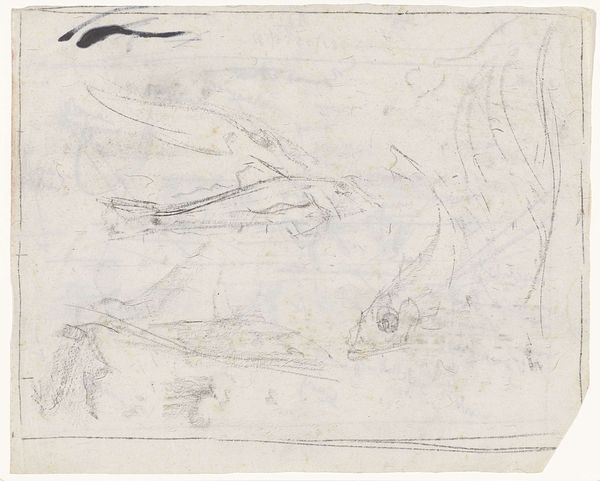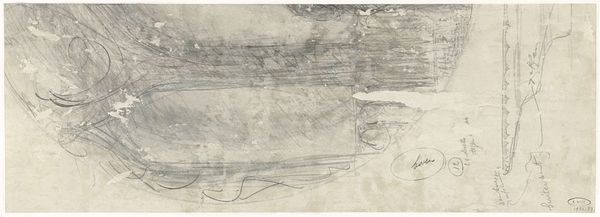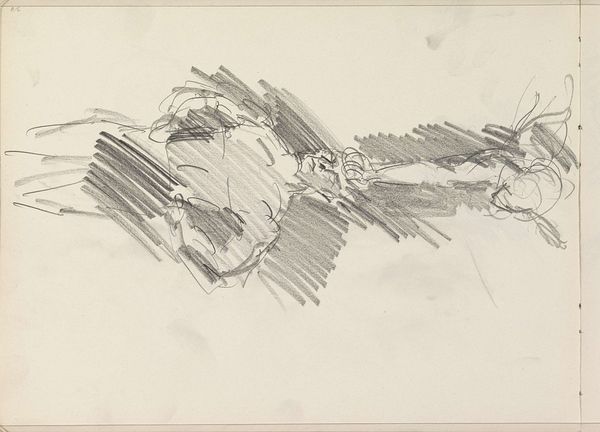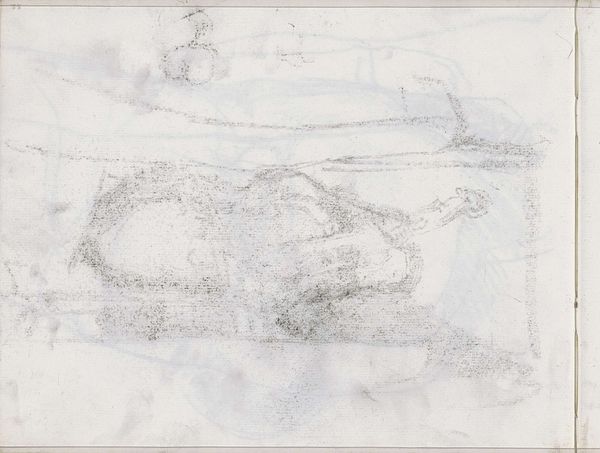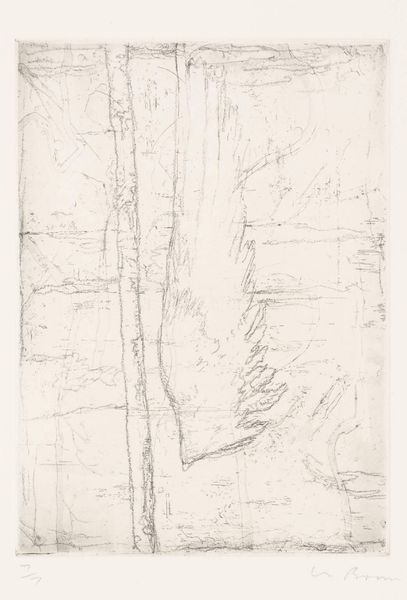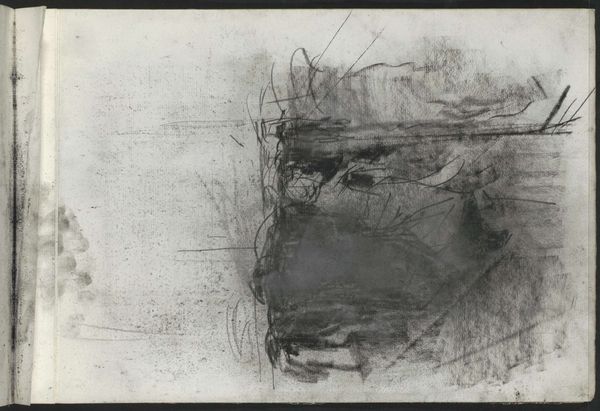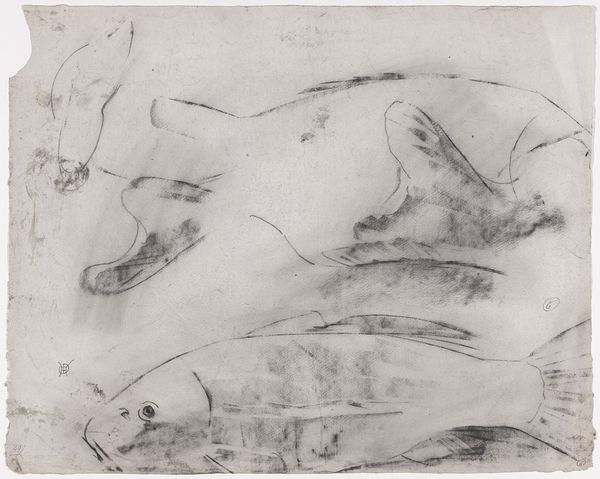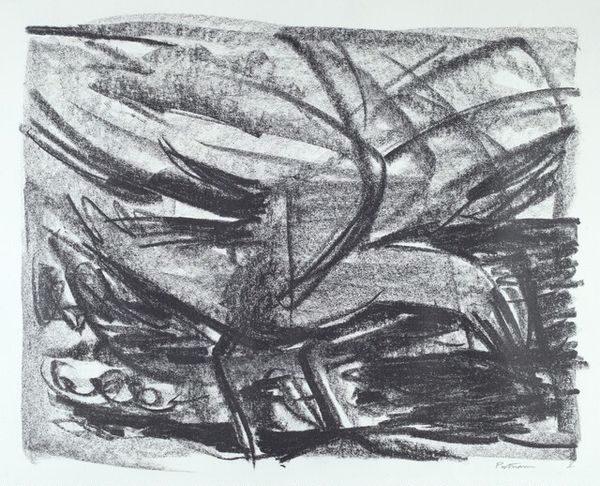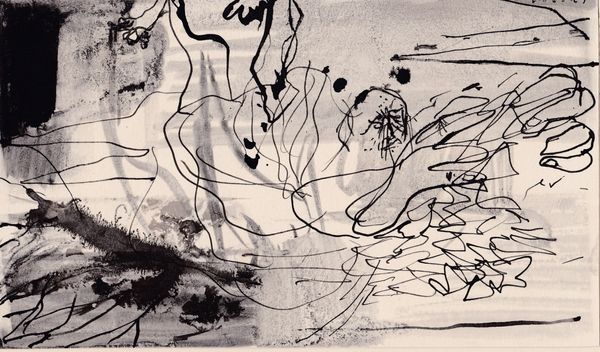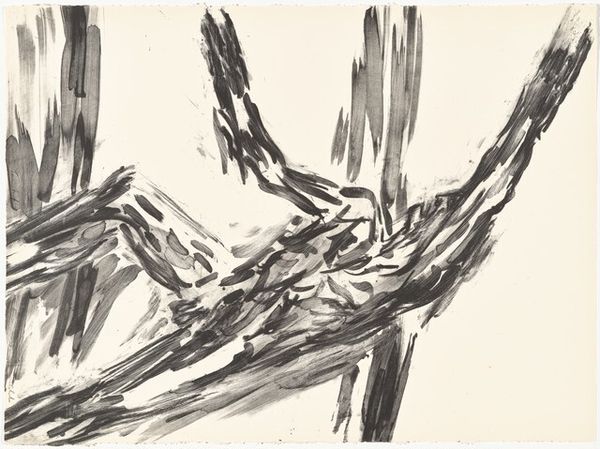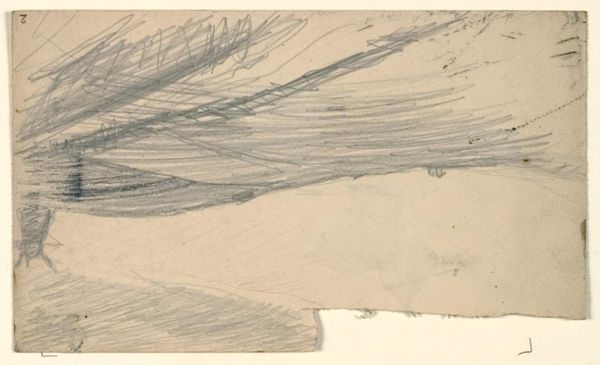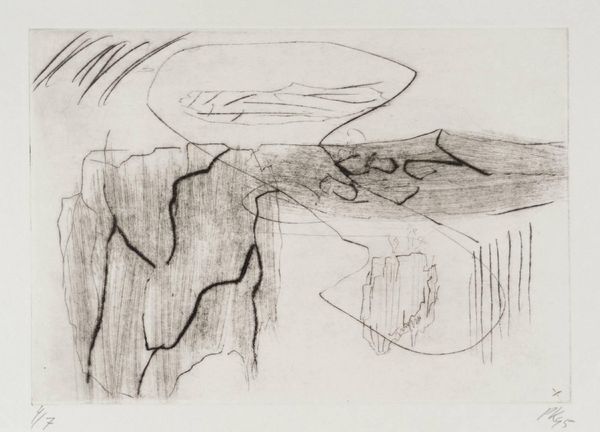
Dimensions: height 120 mm, width 270 mm
Copyright: Rijks Museum: Open Domain
Curator: Here we have Gerrit Willem Dijsselhof’s "Studies van Ponen," created between 1876 and 1924. The Rijksmuseum holds this drawing, primarily executed in pencil. Editor: It’s almost ghostly. The hazy rendering suggests transience, perhaps the ephemeral quality of nature itself. Note how the subtle value changes denote volume. Curator: Precisely. The emphasis here rests on Dijsselhof's application of medium and the resultant formal effect. One could dissect the tonal distribution, reading how he directs the eye through layering and the manipulation of shadow. The visual language creates a space. Editor: I'm drawn more to the actual physical labor, the hand repeatedly moving across the paper, building these textures. It begs the question, was the paper specially prepared, chosen for a particular tooth? Did Dijsselhof grind his own pigments for the pencil? These aspects imbue meaning. Curator: Interesting questions. While these considerations contribute a contextual depth, I remain most intrigued by the composition's inherent formalism. Observe the careful balance achieved through line weight and negative space. The subject, the pond studies, recedes into mere suggestion. Editor: But what is that suggestion? Is it idealized nature or a site of labor? Think of the people who might have harvested reeds, caught fish, or simply existed near the water. The material conditions and the lives interwoven with that landscape matter. This wasn’t produced in a vacuum. Curator: A point well taken. Considering context is crucial. However, it’s difficult to ignore the deliberate structure of the piece itself. Its symmetry, asymmetry, tonal variations and patterns… These aspects achieve the artistic expression beyond pure mimetic representation. Editor: In its apparent simplicity, it exposes a complexity that lies at the core of artistic intent—the translation of a subject using available matter. Curator: Indeed. A negotiation between medium and maker that transcends mere subject matter, a dialectic made tangible by Dijsselhof. Editor: Yes. From start to finish, that interaction is what fascinates, even after the labor is completed.
Comments
No comments
Be the first to comment and join the conversation on the ultimate creative platform.
